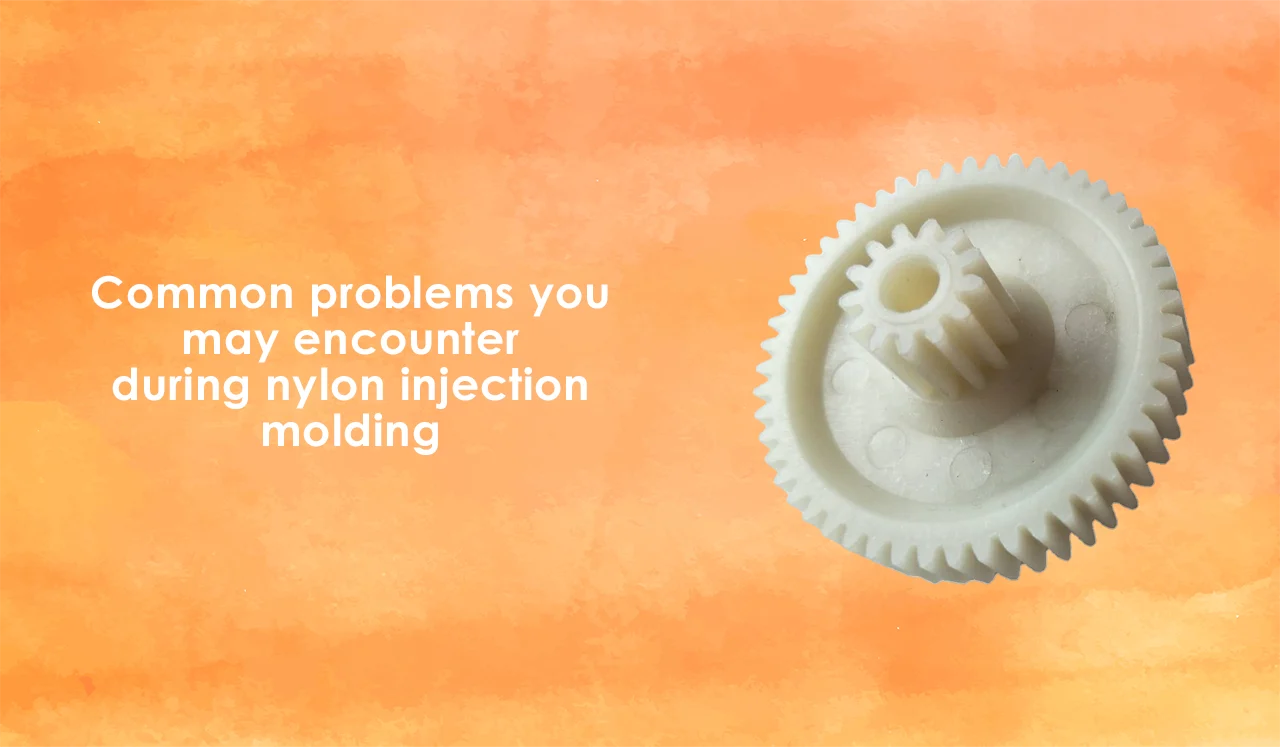Fast Delivery and Low MOQ withMoney Back Guarantee...
Fast Delivery and Low MOQ withMoney Back Guarantee...

Nylon is one of the hardest materials to mold with. The substance itself has excellent built-in qualities, including durability and, when applied appropriately, attractiveness. However, using the material itself may occasionally need for a robust processing strategy to avoid variances and flaws. By following a few simple molding guidelines, you may avoid processing hassles and make nylon processing less difficult. In this essay, we'll talk about some typical issues with nylon molding.
1. Gassing:
Gassing is among the most typical issues with nylon injection molding. Inadequate filling in of the rib or detail sections, shorts or unfilled, and poor or chalky look are all caused by gas.
Causes of gassing:
There are several causes for gassing. First off, additional gas will be created the hotter the barrel is. When attempting to fix a gassing issue, there are a few things to keep in mind. The initial process setup would come first. As determined by the material source, always begin at the low end of the scale of the melt window. A CPU should always strive to maintain as little heat as feasible. Lower temperatures cause less gas to be produced, however, it should be remembered that a heat that is too low might cause flow-front performance to be compromised, which can result in shear, burns, or unfill. Spend some time determining the ideal temperature for a pleasant flow with little gassing.
Major headaches might result from poor venting. Venting towards the end of fill is essential to provide process control. A thorough preventative maintenance strategy must be developed after a historical mold analysis when vented pins are employed.
2. Moisture:
The engineering of nylon also depends on moisture. Poor drying might result in moisture and other possible faults that lead to junk. It is significant to remember that nylon is the most volatile liquid and may absorb moisture the fastest.
To ensure that the material being delivered to the loader is adequately dry, it is standard protocol followed in nylon injection molding services to drain at least 25 pounds of stuff from the dryer cone before commencing a press. Additionally, confirm that any material that has been sitting for more than five minutes has been removed from the loader line and loader receptacle. Purge the barrel thoroughly to enable it to heat soak.
3. Shrinkage:
One substance that is more likely to shrink is nylon. It may have an impact on dimensional characteristics. Some nylons are semi-crystalline as well. Reduced strength, poor color, and warp can be caused by increased or poor shrinking. The temperatures of the barrel and the mold must be managed to prevent shrinkage. It is crucial to keep in mind that any additional heat lengthens cycle time. Such growth is necessary in some circumstances to enhance the part's qualities. It's also crucial to remember that, even though the general principle is that component shrinkage occurs within an hour, nylon stasis can occasionally take up to 24 hours to complete.
The best method for creating precise rubber moulded parts and rubber-to-metal bonded goods is rubber injection molding. The procedure for molding rubber into injection-molded rubber is based on a procedure for molding plastics. Rubber is treated under much mounting stress per square inch of the mold cavity surface in the different procedures by Plastic Injection Molds. By heating the rubber and applying much greater pressure per square inch of cavity surface during molding, rubber injection molding successfully modifies the plastics manufacturing process. In many instances, injection molding has evolved into one of the most effective techniques to make molded rubber items. The preparation of the material effectively is the first step in the injection and injection-transfer molding processes.
Through an aperture, molten polymer is injected under intense pressure into a mold cavity during the injection molding process. A hopper is used to feed pelletized polymer material into a polymer injection molding machine. The material is then driven into a split mold by a feeding screw, filling its cavity via a feeding system with a sprue gate and runners. Extruder and injection molding machines are similar. The screw action of the two machines is where the biggest distinction lies. Continuous screw rotation in the extruder produces constantly lengthy products. Since the screw on an injection molding machine not only rotates but also travels forward and backward under the stages of the molding cycle, it is known as a reciprocating screw.
Whereas, to maintain internal stresses as low as possible during the polypropylene injection molding service, a rapid speed is often used; however, when there are surface imperfections, it is preferable to utilize a slower speed at higher temperatures. Utilizing machinery capable of providing profiled speed is highly advised.

